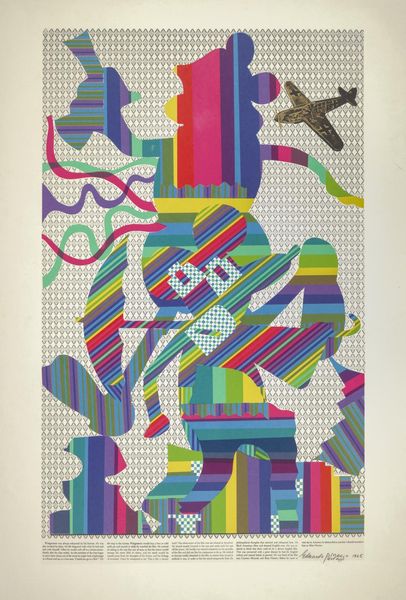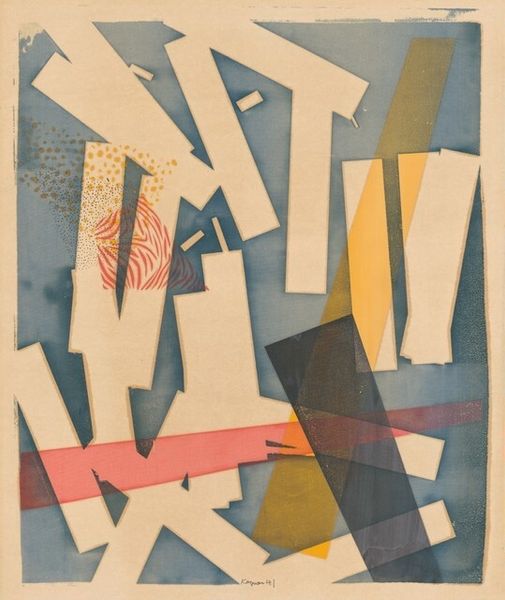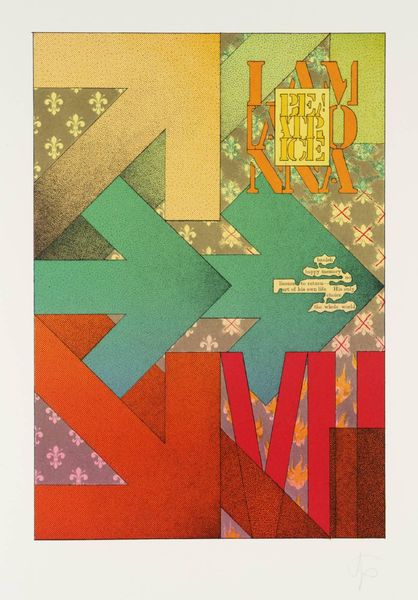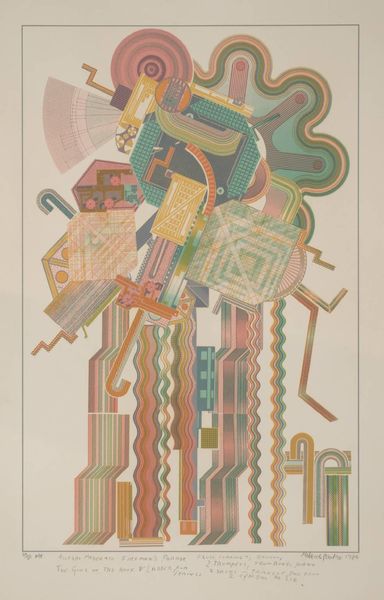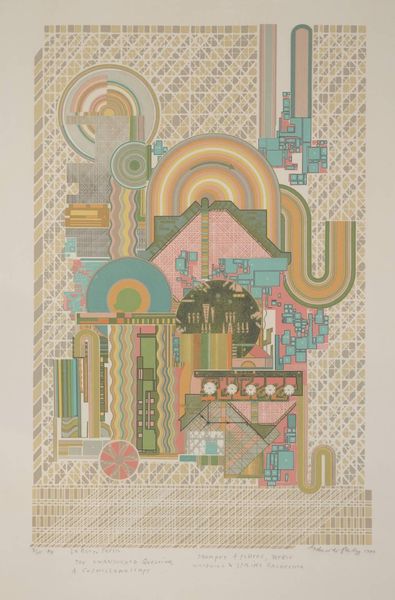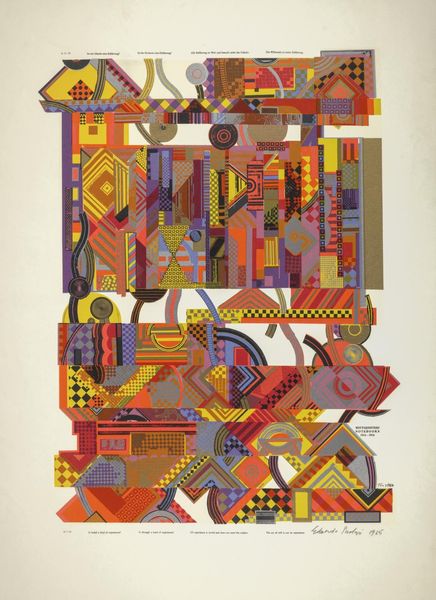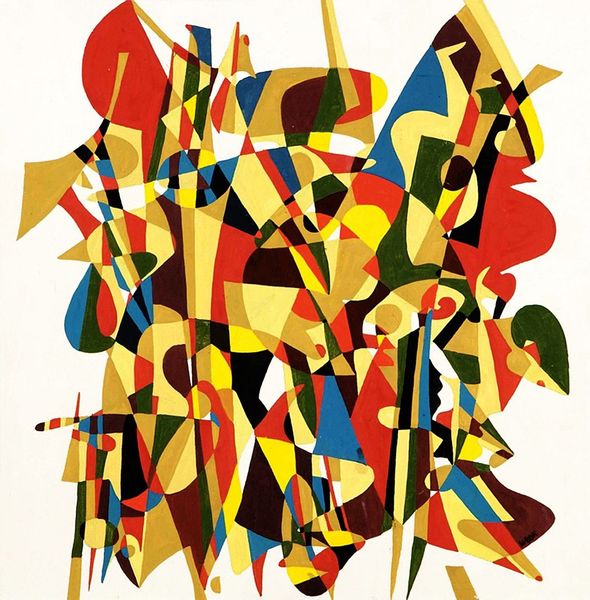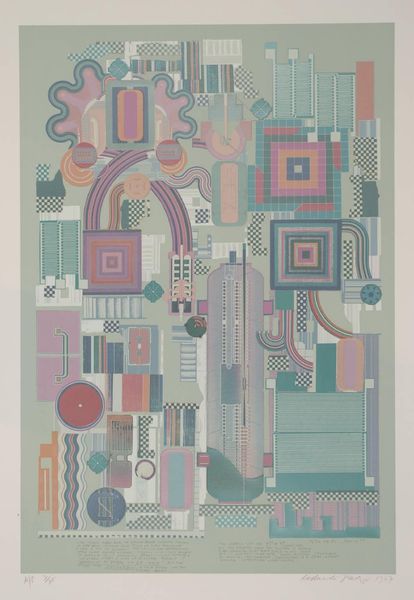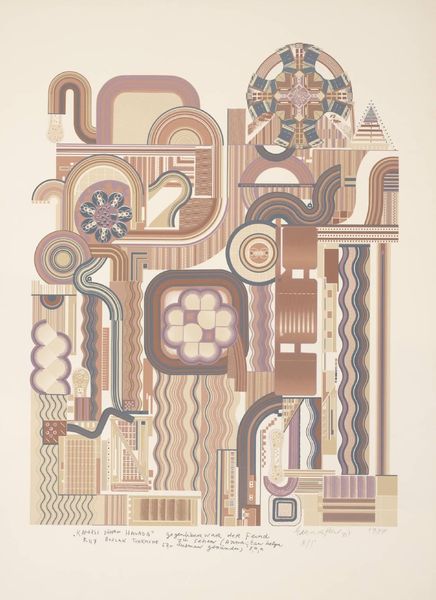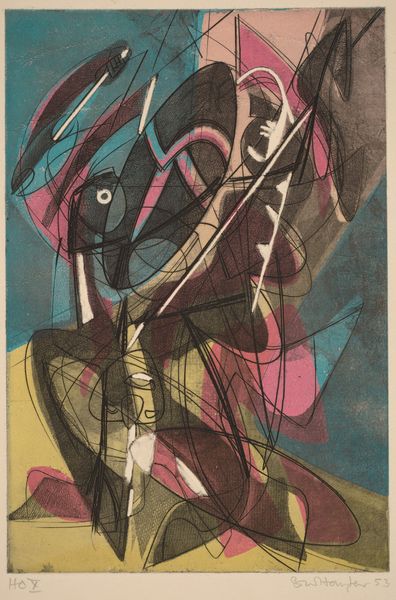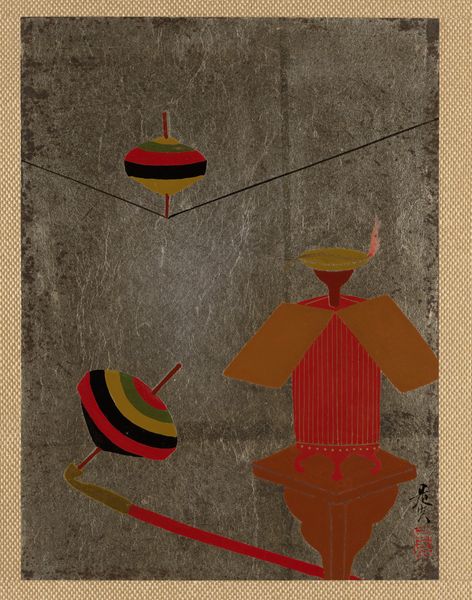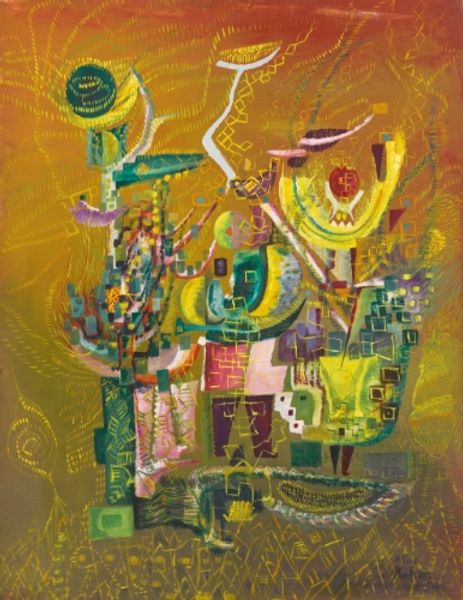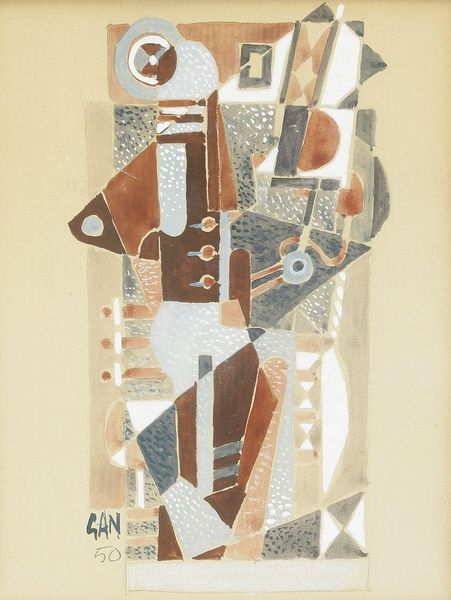
Dimensions: image: 767 x 548 mm
Copyright: © The Eduardo Paolozzi Foundation | CC-BY-NC-ND 4.0 DEED, Photo: Tate
Curator: Eduardo Paolozzi’s "Parrot," residing here at the Tate, strikes me as a curious, almost architectural assemblage. What are your initial thoughts? Editor: It’s playful! The warm palette and geometric shapes give it an optimistic and somewhat futuristic feel. I detect the symbols of late modernism. Curator: I see the cultural memory in these forms. Paolozzi, influenced by Surrealism and technology, often explored how machines impact human identity and social structures. He draws from earlier surrealists like Picasso and Léger. Editor: Yes, and it speaks to the post-war reconstruction and technological optimism of the era. But how does this construct challenge us? Curator: I read this as a commentary on that era. It speaks to the artist's identity as an immigrant, an outsider, and positions Paolozzi as a vital voice of cultural theory. Editor: A unique vantage point, indeed. I’ll be thinking about this "Parrot" for a while. Curator: As will I. Thank you for providing some crucial context.
Comments
Join the conversation
Join millions of artists and users on Artera today and experience the ultimate creative platform.
tate 6 months ago
⋮
The life and theories of the Austrian philosopher Ludwig Wittgenstein inspired this sequence of screenprints. Each print includes quotations from Wittgenstein's own writings or passages from a biography. The collages of fragmented images relate to these texts. Paolozzi has described the prints as 'a kind of combined autobiography'. His Italian background led him to identify with Wittgenstein as 'a foreigner in England', who shared an interest in engineering and a love of cinema. He has also drawn parallels between Wittgenstein's theories of language and his own artistic practice. Gallery label, August 2004
